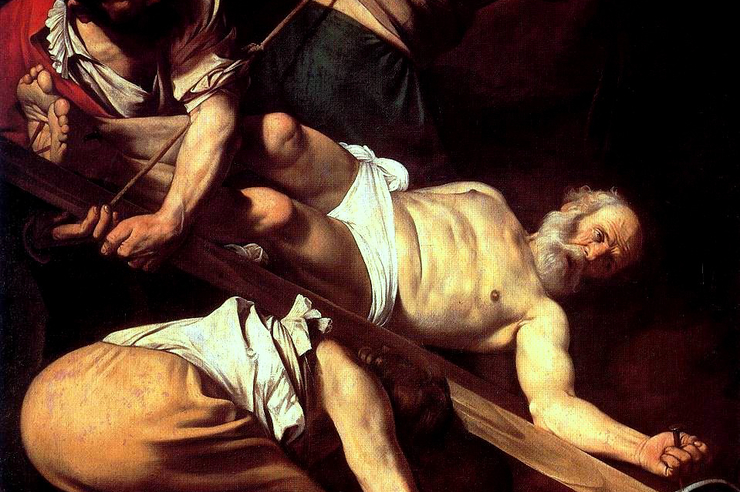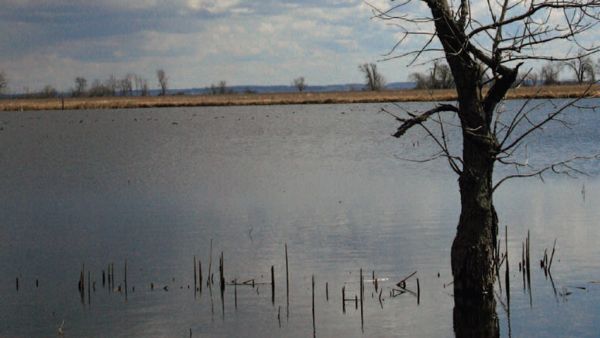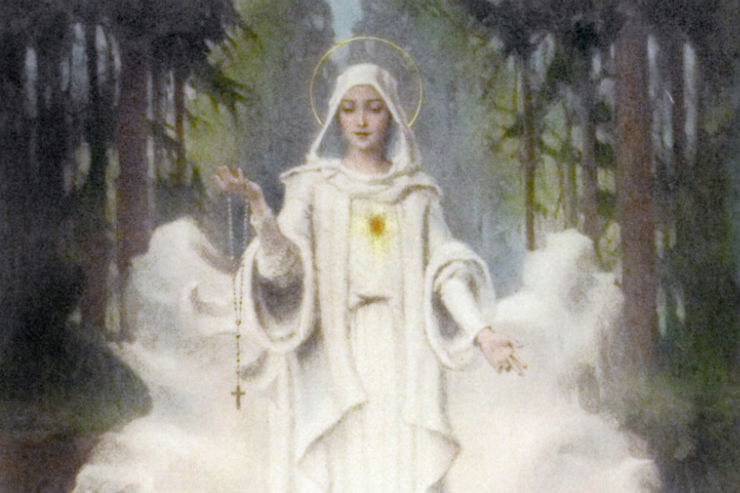One of the most remarkable places to experience while visiting Rome is a small dark room under Vatican hill. Very few tourists even know its existence, and access is limited to 250 people a day. In a city filled with art, this room is bare. A tour guide shepherds you into the room, and then points through a large window. There, with a light shining on it, tucked in the ancient ruins of shrines and altars dating back to second century, is a Plexiglas box, through which you can see their precious contents.
The bones of St. Peter.
The bones lie directly under the main of altar of St. Peter’s Basilica, far below the soaring dome of Michelangelo. While most people believed the bones were there, their existence was not confirmed until the middle of the twentieth century, when archaeologists began excavating the pagan cemetery that lies under the vast basilica.
It is hard to not be moved when standing in the silence, seeing the bones of the first century fisherman. The sinful man who denied Our Lord (Lk 22:59-62). The repentant man who was commissioned to feed the Lord’s sheep (Jn 21:17). The man named Rock (Mt 16:18). Here are his mortal remains, far from the land of Palestine.
Could a fisherman from Bethsaida ever imagine he would find himself in Rome? From the shores of the Sea of Galilee to being killed in Nero’s circus and buried on Vatican Hill. From completely unknown to having one of the most glorious churches in the world built over his grave. From a sinful, rash, passionate man to a saint in heaven, who is celebrated two thousand years later.
Even after meeting Jesus, when his life was drastically changed, Peter could never have predicted his own fate. Christ reminds him that his life is no longer his own: “Truly, truly, I say to you, when you were young, you girded yourself and walked where you would; but when you are old, you will stretch out your hands, and another will gird you and carry you where you do not wish to go.” (Jn 21:18)
Likewise Saul, an observant Jew, a promising scholar of the Law, never would have dreamed while studying at the feet of the famous Gamaliel that he would be accused of betraying Judaism and be killed for preaching a new Way (Acts 24:14). Zealous against this new religion, Saul was an unlikely candidate to be the greatest preacher the Church has ever known. But thus was the call of Christ (Gal 1:13-15).
St. Peter and St. Paul did not seek their fame. They weren’t seeking to be remembered in 2015 in a faraway land called America. And yet they are remembered to this day. On Monday we will celebrate the feasts of Peter and Paul, two of the few saints to have more than one feast day.
Peter did not run for office. If anything, he ran from office. The Romans have a beloved story where St. Peter, fleeing the city of Rome and the wrath of Nero, meets Christ on the Via Appia. Christ is headed in the opposite direction, towards the city. “Quo vadis, Domine?” Peter asks. Lord, where are you going? Christ responds that he is going to Rome to be crucified a second time.
The Good Shepherd lays down his life for his sheep.
Peter returned to Rome.
These two men could not have known the future—but they knew the present. And they knew that Christ would give them strength for the future, even if it was a future they had not chosen for themselves.
Like Peter and Paul, we stand for a Way that is contrary to the ways of the world. We stand for a Truth that is contrary to public opinion, the secular culture, and even some policies of our government. We didn’t choose this battle. But the battle is here.
[Editor’s Note: This morning (June 26, 2015) the United States Supreme Court, in a 5-4 decision, ruled in favor of “same-sex-marriage.”]
The future is unknown. What will be asked of us? We don’t know where this battle will lead. For example, as we await the United States of America Supreme Court’s decision on marriage, perhaps it’s even hard to tell where things stand right now. But as followers of Christ, as members of a community that has been counter-cultural from the beginning, we are walking in the footsteps of Peter and Paul. We ask for the grace to proclaim the Gospel boldly as they did, telling our critics, “Whether it is right in the sight of God to listen to you rather than to God, you must judge; for we cannot but speak of what we have seen and heard.” (Acts 4:19-20)
We must educate ourselves on what the Church teaches and pray for the grace to share that truth in love, remembering Peter’s command: “Always be prepared to make a defense to anyone who calls you to account for the hope that is in you, yet do it with gentleness and reverence.” (1 Peter 3:15)
It is still possible to walk through the Roman Forum and walk the path that Peter the fisherman walked. One can stand on the hill where the Temple of Jupiter once stood—the most important Temple in Rome. Overlooking the Forum, it stood watch over the center of the known world.
Now when one stands on that spot, your vision is directed elsewhere. Instead of east, you face west. Looking out over the modern city of Rome, your eyes rest on the glorious dome of St. Peter’s.
The Colosseum and the Roman Forum stand as stark reminders that worldly victory is fleeting. Nero thought he had won, when Peter was crucified upside down and Paul was beheaded. Instead he had crowned them with the glorious crown of martyrdom.
May we have the courage to accept the unknown future and the trust to accept the call of Christ.















